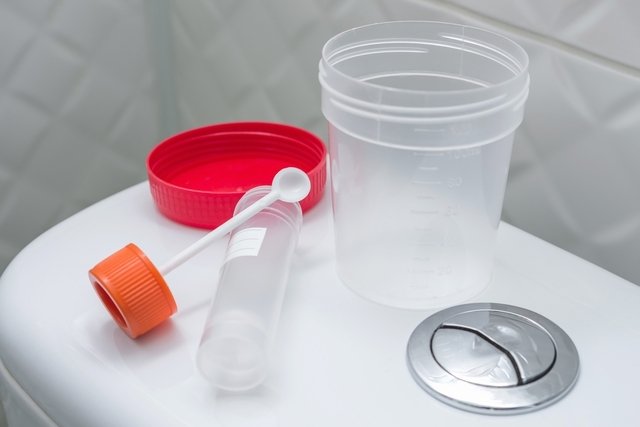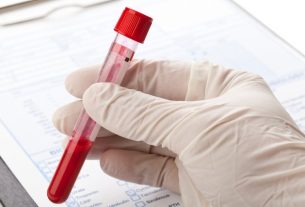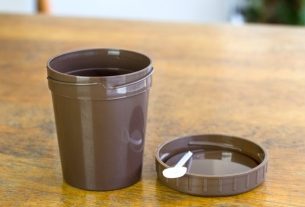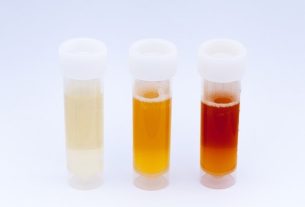Calprotectin is a protein released by neutrophils, which are a type of white blood cells, which travel to the gastrointestinal tract when there is inflammation, releasing this protein, which is found in high concentrations in feces.
The calprotectin test, also known as fecal calprotectin, is normally requested with the aim of diagnosing inflammatory bowel diseases and/or evaluating whether the treatment for these diseases is effective. Thus, examination is indicated when the person presents signs and symptoms indicative of intestinal diseases, such as blood in the stool, abdominal cramps, fever and weight loss, for example.
This exam is carried out based on the analysis of a stool sample and must be complemented by other blood tests, such as C-reactive protein measurement and blood count, and imaging tests, such as colonoscopy or sigmoidoscopy, for example, which is indicated when the person presents changes indicative of intestinal changes.

What is it for
The fecal calprotectin test is used to diagnose inflammatory bowel diseases and monitor the response to treatment. This happens because in the presence of inflammation in the intestine, neutrophils, which are blood cells responsible for the body’s defense, travel to the gastrointestinal tract and promote the release of calprotectin, which results in high concentrations of this protein in the feces.
Therefore, this test is mainly indicated for diagnosing ulcerative colitis and Crohn’s disease, and is also useful in the differential diagnosis for Irritable Bowel Syndrome, in which people with this change have normal calprotectin levels.
When is indicated
The calprotectin test is indicated mainly when the person presents signs or symptoms possibly indicative of intestinal changes, such as:
- Presence of blood and/or mucus in the stool;
- Liquid stools, in the case of diarrhea;
- Abdominal pain and cramps;
- Fever;
- Weight loss;
- Loss of appetite;
- Nausea and vomiting, in some cases;
- Pain when defecating;
- Anal fissure;
- Constipation, in some cases.
Therefore, in the presence of these signs and symptoms, it is important that a gastroenterologist is consulted, as this may indicate the need for tests to assess the health of the gastrointestinal system, including fecal calprotectin testing, helping to identify the cause of the symptoms and start the most appropriate treatment.
Better understand which diseases can cause intestinal inflammation and their symptoms.
How the exam is carried out
The calprotectin test is carried out using a stool sample, which must be collected and taken to the laboratory for analysis. It is important that the laboratory’s recommendations for collecting feces are followed, and it is recommended to evacuate on a sheet of paper or in a chamber pot and then collect a sample and place it in the bottle for analysis.
Another option for collecting feces is to evacuate in a sterilized plastic bag specifically for collecting feces, which must be properly positioned in the toilet to avoid contamination. This type of collection is mainly useful for people who have reduced mobility or who have very liquid stools.
To take this exam, you do not need to prepare or fast.
What does the result mean
Calprotectin test values may vary according to the laboratory in which it is carried out, as the method and test performed may vary. However, in general, the result of the fecal calprotectin test is:
- Normal: up to 50 mg/kg;
- Undetermined or suggestive of inflammatory bowel disease: between 50 mg/kg and 200 mg/kg;
- Positive or indicative of intestinal changes: above 200 mg/kg.
Thus, according to the levels of calprotectin in the feces, the doctor can identify intestinal changes and, therefore, recommend additional tests and/or initiate the most appropriate treatment.
When calprotectin is used to monitor treatment for intestinal changes, it is recommended that its concentration decrease over time, which is an indication that the treatment is being effective.
Bibliography
- THERMOFISHER. Calprotectina 2. Available at: <https://www.thermofisher.com/diagnostic-education/dam/commercial/library-resources/Calprotectina_2-PT-BR.pdf>. Accessed on November 29, 2021
- KOTZE, Lorete Maria S.; NISIHARA, Renato M.; MARION, Sandra Beatriz et al. Fecal calprotectin: levels for the ethiological diagnosis in Brazilian patients with gastrointestinal symptoms. Arq Gastroenterol. Vol 52. 1 ed; 50-54, 2015
- BRAZILIAN SOCIETY OF CLINICAL PATHOLOGY. SBPC/ML contributes to the inclusion of four more exams in the ANS ROL. Available at: <http://www.sbpc.org.br/noticias-e-comunicacao/sbpcml-contribui-para-a-inclusao-de-mais-quatro-exames-no-rol-da-ans/>. Accessed on November 29, 2021




